Home Abs Workout for Beginners is one of the most effective ways to start your fitness journey without needing a gym or expensive equipment. When I first began training at home, I didn’t realize how much my core strength was affecting my daily life. A weak core made even simple tasks like sitting for long hours or carrying groceries feel harder. But once I started focusing on my abs, I noticed a big change — my posture improved, my lower back pain reduced, and I felt more confident in my movements. That’s when I understood: abs training isn’t just about flat stomach goals, it’s about building a strong foundation for the whole body.

For beginners, core training is even more important because most of us spend hours sitting or slouching, which weakens our midsection. A dedicated abs workout can reverse that damage by strengthening your spine support, improving balance, and making everyday activities easier. And the best part? You don’t need any equipment. These no-equipment workouts are budget-friendly, time-saving, and completely doable at home. All you really need is a small space, maybe a mat for comfort, and your own bodyweight.
Over the years, I’ve learned one thing: consistency is more powerful than intensity. Even 10–15 minutes of focused ab training daily can build noticeable strength and stability. It doesn’t have to be complicated — just simple exercises done with good form and dedication.
That’s why I love sharing routines like this. This easy Home Abs Workout for Beginners is simple, effective, and requires no equipment. If you’re ready to improve your posture, reduce back strain, and feel stronger in your daily life, then this is the perfect place to start.
Table of Contents
Benefits of Home Abs Workouts
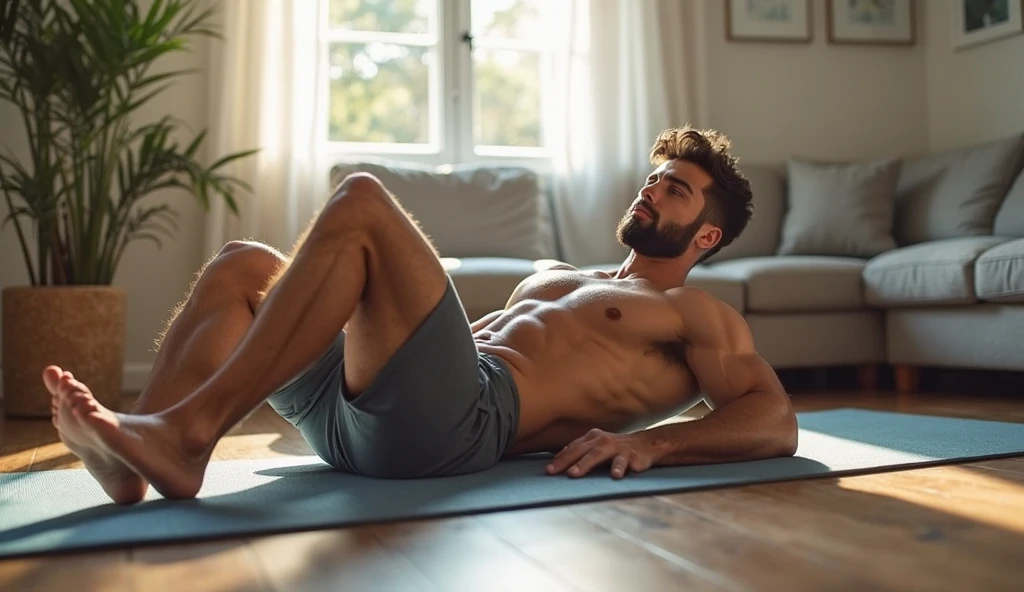
When I think back to why I first started doing ab exercises at home, the biggest motivation was simple: I wanted to feel stronger in my daily life without relying on a gym. Over time, I discovered that the benefits of a Home Abs Workout for Beginners go far beyond just looks — they impact the way your entire body functions.
First, a stronger core means better balance and stability. I noticed this the most when climbing stairs or even just walking faster. Suddenly, I wasn’t wobbling or feeling out of breath; my body felt more controlled and stable. A solid core acts like your body’s powerhouse, keeping everything else in check.
Second, abs workouts play a key role in fat burning and lean muscle definition. Even though spot reduction isn’t possible, training the core boosts your metabolism and makes full-body movements more efficient. I personally found that once I strengthened my abs, my other bodyweight workouts — like push-ups and squats — felt easier and gave better results.
Third, core training reduces the risk of lower back pain. This one hit home for me because sitting at a desk for hours often left me with a stiff back. But after weeks of consistent ab workouts, that pain slowly disappeared. A strong midsection supports your spine and takes pressure off the lower back, which is a game-changer for anyone with a desk job or long study hours.
Finally, home abs workouts are perfect for beginners without gym access. They’re budget-friendly, quick to do, and don’t require more than a few feet of space. Honestly, this is why I never feel the pressure to buy equipment — simple exercises at home can be just as effective when done with consistency and focus.
My realization: “You don’t need a gym to get strong — you just need commitment, and your own body is enough.”
1. Warm-Up (3–5 Minutes)
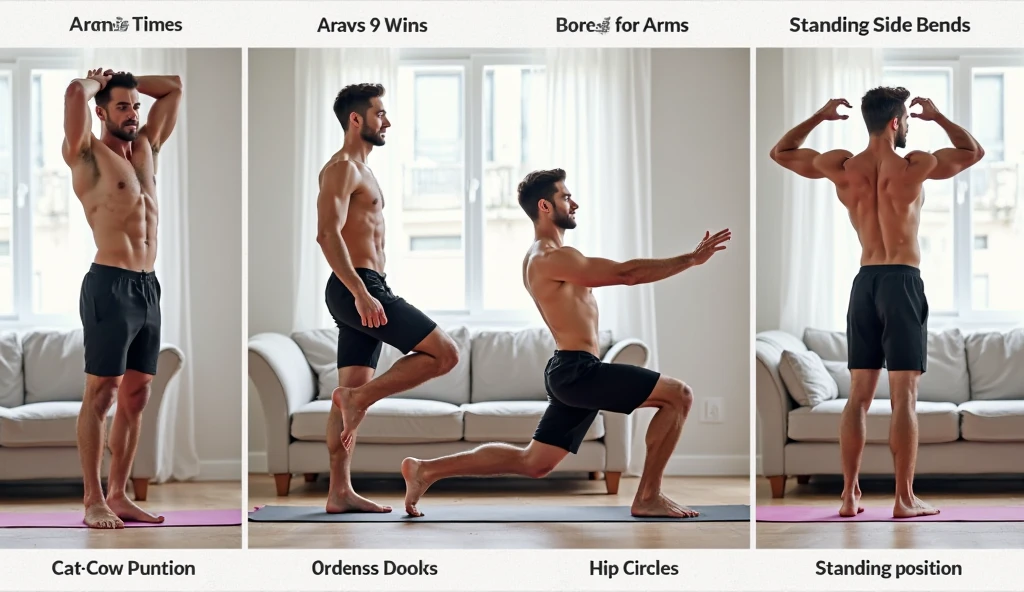
Before starting any Home Abs Workout for Beginners, I always take a few minutes to warm up. These simple moves wake up my muscles, improve flexibility, and reduce the risk of injury. Skipping this step once gave me a stiff back during crunches — and I promised myself I’d never make that mistake again. Here are my favorite 3–5 minute warm-up exercises:
2. Cat-Cow Stretch
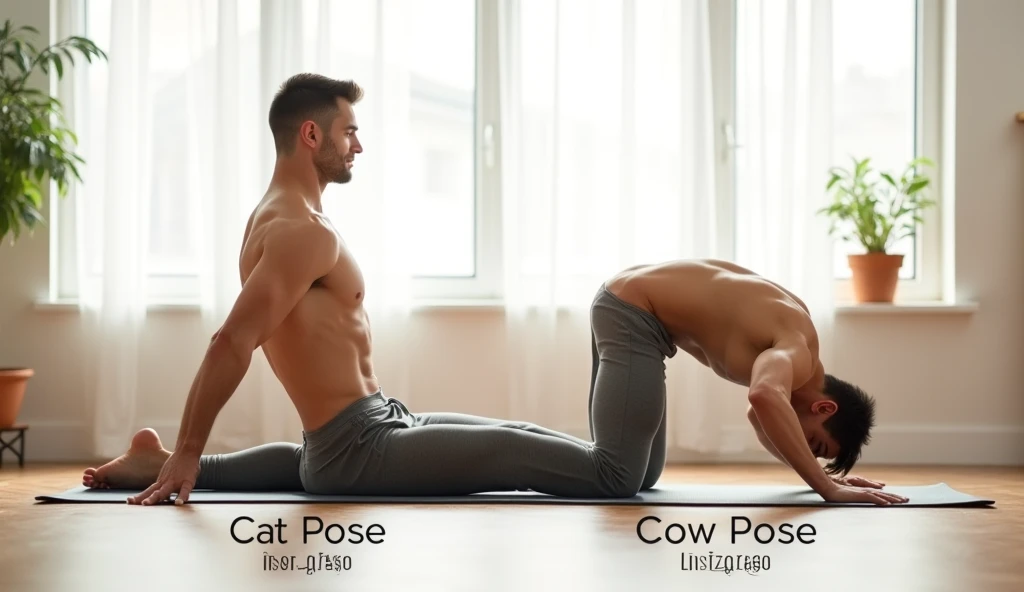
This yoga-inspired stretch is my go-to for loosening the spine. I get down on all fours, hands under shoulders, knees under hips. First, I arch my back upward like a cat stretching, tucking my chin in. Then, I slowly drop my belly down, lift my chest, and gaze upward — like a cow pose. Repeating this 6–8 times warms up my spine and gently activates my core. It feels like I’m switching on the muscles I’m about to train.
3. Standing Side Bends
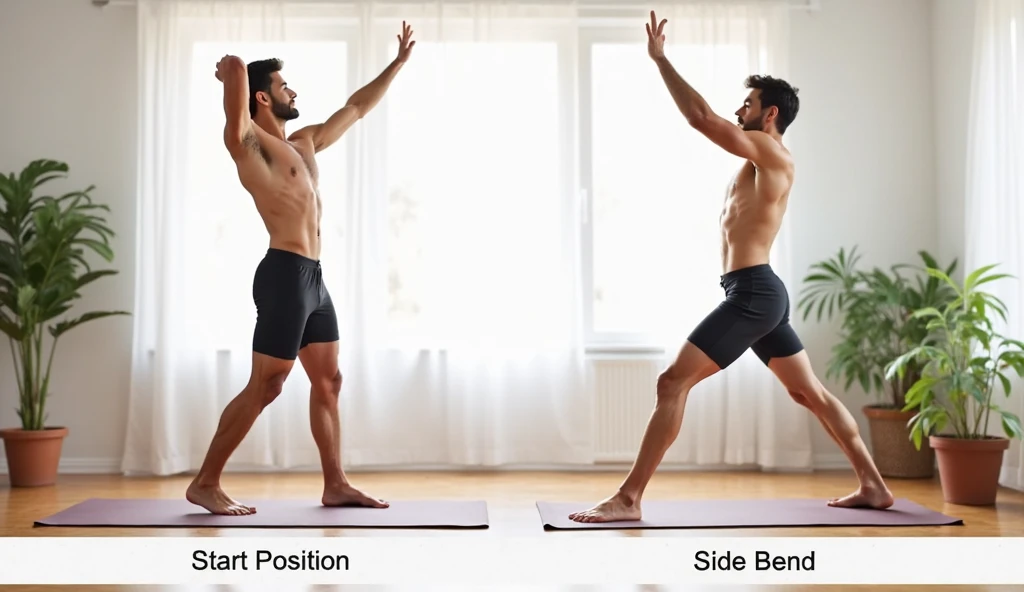
Next, I stand tall with my feet hip-width apart. I raise one arm overhead and lean to the opposite side, stretching the obliques (side abs). Holding for a couple of seconds on each side gives me a deep stretch along my waist. I repeat this 8–10 times, alternating sides. For me, this move is a reminder that abs aren’t just about the front muscles — stability comes from the sides too.
4. Arm Swings + Hip Circles
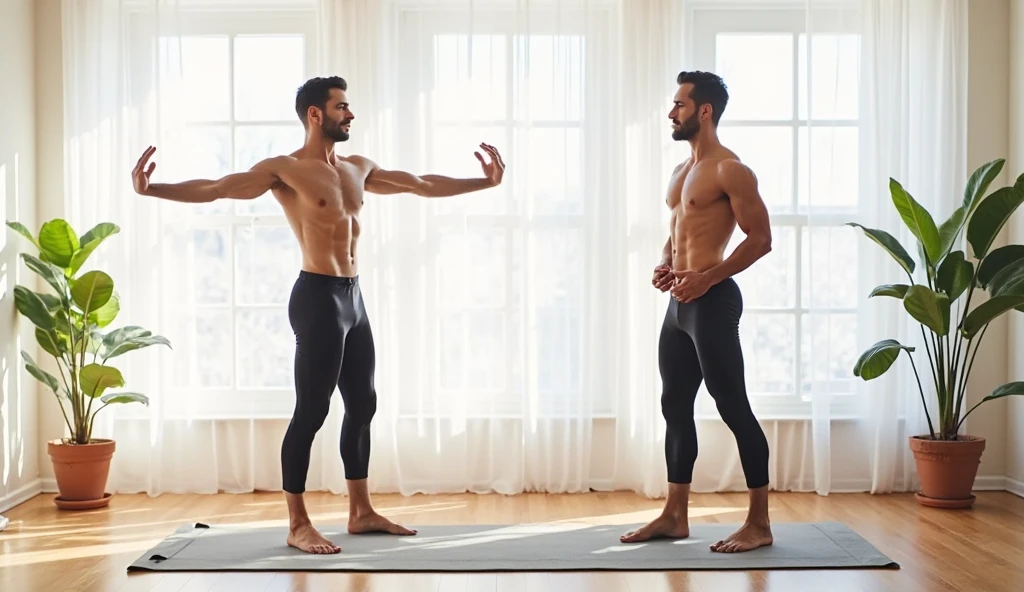
To finish, I loosen up my upper body and hips. I swing my arms forward and backward in big circles, feeling my shoulders open up. Then, I place my hands on my hips and rotate them in slow, wide circles — first clockwise, then counterclockwise. This boosts blood flow, improves mobility, and makes me feel energized.
My tip: “A good warm-up doesn’t just prepare the body — it prepares the mind.”
Just 3–5 minutes of these moves make my abs workout smoother, safer, and far more effective.
Easy Home Abs Workout for Beginners (Main Moves)
Whenever I set up my Home Abs Workout for Beginners, I like to divide it into circuits. This keeps the session organized, prevents boredom, and pushes me just enough without feeling overwhelming. If you’re new, start with one round of each circuit. As you build stamina, aim for 2–3 rounds. Trust me, the progress feels amazing when you notice yourself holding a plank longer or finishing those extra reps.
Circuit 1 – Basic Core Activators
5. Crunches (12–15 reps)

Crunches were the very first ab exercise I tried at home, and they still remain a classic. I lie on my back, knees bent, feet flat on the floor, and hands lightly behind my head. The goal is to lift my chest just a few inches, using my abs rather than pulling my neck or shoulders. Keeping the movement slow and controlled is key — I pause slightly at the top, then lower back down with tension. Over time, I’ve noticed even small improvements in form make my core feel tighter and more engaged.
6. Reverse Crunch (10–12 reps)
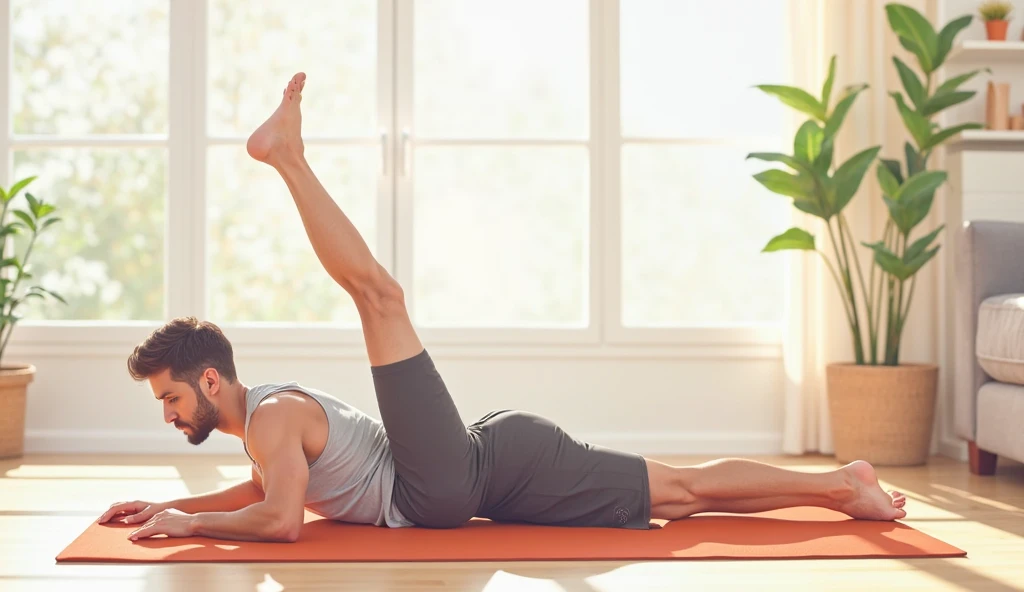
Reverse crunches target the lower abs, which is one of the trickiest areas for beginners. I lie flat with my legs lifted, knees bent at 90 degrees, and slowly curl my hips off the floor as I bring my knees toward my chest. The secret is not to swing or use momentum, but to press my lower back into the mat and lift with control. This move always reminds me that small, precise movements can burn more than big flashy ones. It’s especially helpful for reducing strain on the neck compared to traditional crunches.
7. Heel Taps (20 reps alternating)

Heel taps always give me a sneaky burn in my side abs. I start lying on my back with knees bent, shoulders slightly lifted off the ground, and arms reaching forward. Then I tap one heel with my hand, then the other, side to side. The key is keeping my core tight the entire time and avoiding dropping my shoulders down. It looks easy at first, but after 15–20 reps, my obliques are on fire. This move is perfect for sculpting the waistline without needing equipment.
Circuit 2 – Stability & Strength
8. Plank Hold (20–30 seconds)
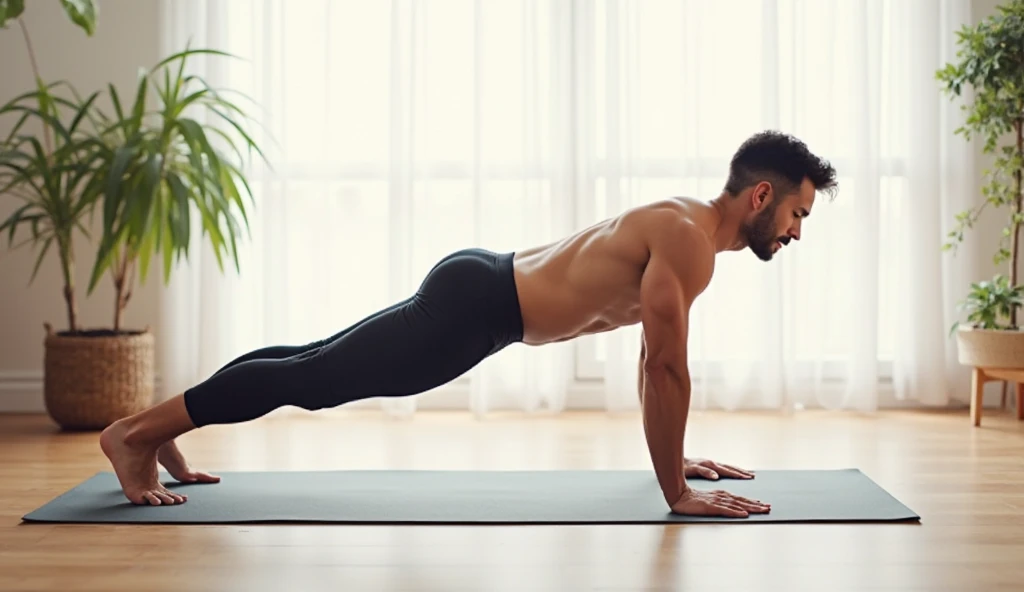
The plank has always been my “test of patience.” At first, even 10 seconds felt impossible, but with practice, I now aim for 30 seconds or more. I place my forearms on the floor, elbows under shoulders, and keep my body in a straight line from head to heels. I squeeze my glutes and brace my abs, making sure my hips don’t sag. It’s a full-body challenge — arms, shoulders, and even legs feel the burn. The best part? It builds mental strength along with physical endurance.
9. Side Plank (15 sec each side)
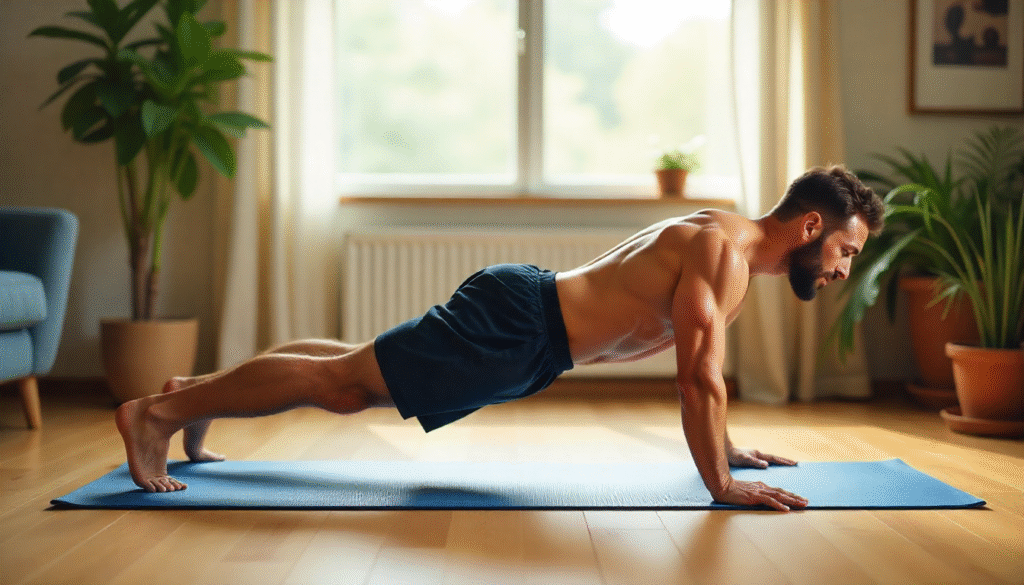
Side planks are my favorite for targeting the obliques and improving balance. I lie on one side, propping myself up on my forearm, stacking my feet, and lifting my hips until my body forms a straight line. Holding this position for 15 seconds per side works the side abs, hips, and even the shoulders. At first, I used to wobble and fall, but now I focus on keeping my core tight and breathing steadily. It’s a powerful move that teaches stability and balance like no other.
10. Glute Bridge (12 reps)
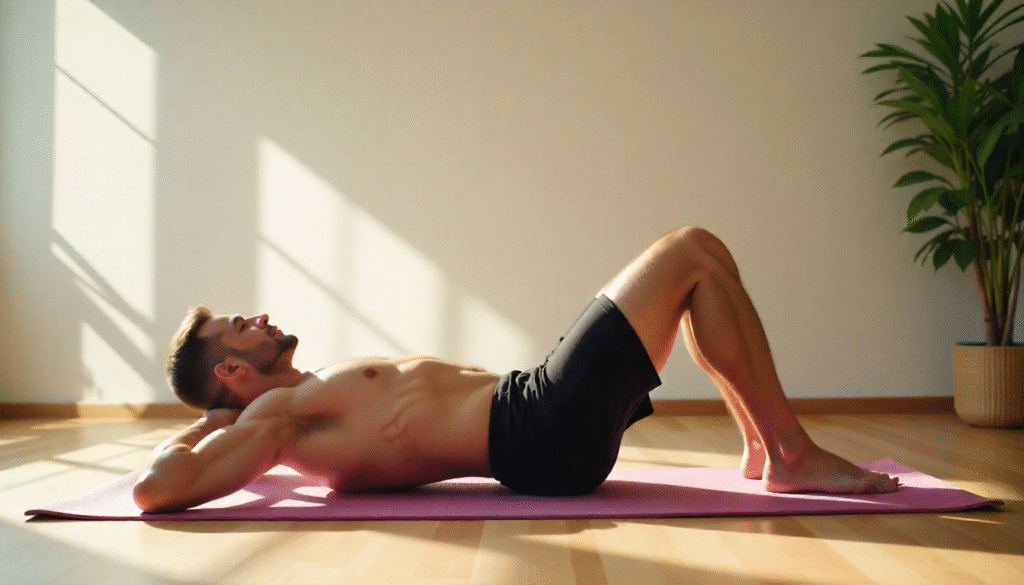
This exercise is often underestimated, but the glute bridge is a game-changer for both core and lower body strength. I lie on my back, knees bent, feet flat on the floor, and slowly press through my heels to lift my hips toward the ceiling. At the top, I squeeze my glutes and brace my abs to avoid arching my lower back. Not only does it strengthen the abs and glutes, but it also helps improve posture and reduces tightness from long sitting hours. I always feel lighter after finishing a set.
Circuit 3 – Obliques & Lower Abs
11. Bicycle Crunches (10 reps per side)

Bicycle crunches feel like cardio and abs rolled into one. I lie on my back, hands behind my head, and bring one knee toward my chest while twisting the opposite elbow toward it. Then I switch sides in a slow pedaling motion. The slower I go, the more intense the burn. This move engages the entire core — upper abs, lower abs, and obliques all at once. I remember feeling completely drained after my first attempt, but now I love how dynamic and challenging it feels.
12. Flutter Kicks (15–20 reps)
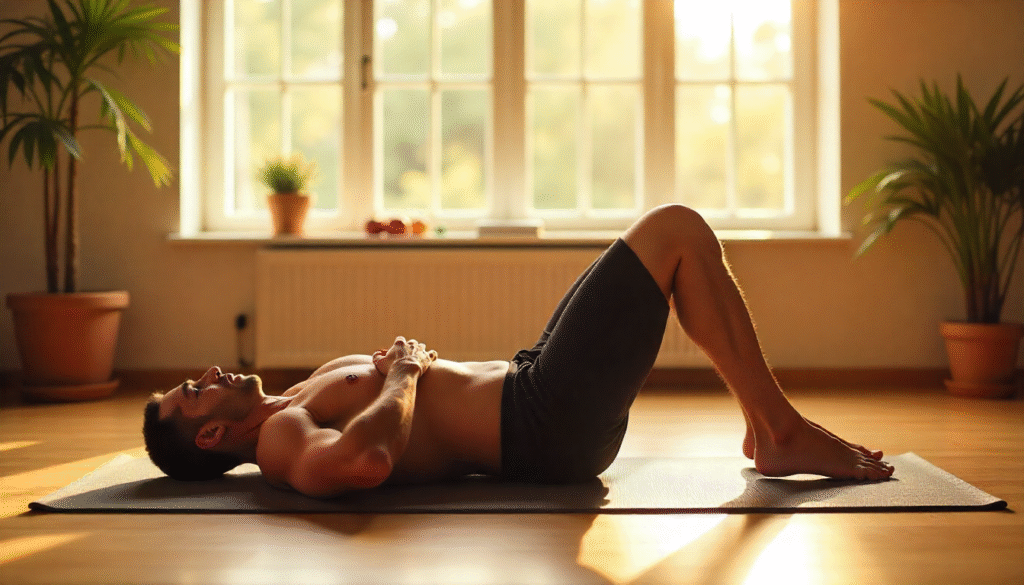
Flutter kicks are tough but so effective for lower abs. I lie flat on my back, hands under my hips for support, then lift my legs a few inches off the ground. From there, I alternate small, quick kicks without letting my feet touch the floor. It looks simple, but within seconds the lower abs start burning intensely. Breathing steadily helps me push through. I always remind myself to keep the lower back pressed into the mat — that’s the secret to doing them safely.
13. Russian Twists (10 reps per side)

Russian twists are my go-to move for finishing any core session. Sitting on the floor with knees bent and feet slightly lifted, I lean back a little and twist my torso side to side, tapping the floor with my hands. It strengthens the obliques, improves rotational strength, and even challenges balance. At first, I struggled to keep my feet off the ground, but with practice, it got easier. Adding control to each twist makes the move far more effective than rushing through it.
My tip: “Don’t focus on speed; focus on control. Every slow, mindful rep makes your abs work harder and delivers better results than rushing through the motion.”
Cool Down (2–3 Minutes)
After finishing any Home Abs Workout for Beginners, I never skip a cool down. In the early days, I made the mistake of stopping right after my last rep. The result? Soreness, stiffness, and sometimes even lower back discomfort. Cooling down helps relax the muscles I’ve just worked, improves flexibility, and leaves me feeling refreshed instead of drained. Here are my go-to stretches for ending an abs session:
14. Cobra Stretch

The Cobra Stretch feels like a reward after core training. I lie on my stomach, place my palms under my shoulders, and slowly press upward, lifting my chest while keeping my hips on the floor. This stretches the abs beautifully, releasing all the tension built up during crunches and planks. I hold the position for 15–20 seconds, breathing deeply. Personally, I love how this move opens my chest and makes me feel taller afterward.
15. Child’s Pose
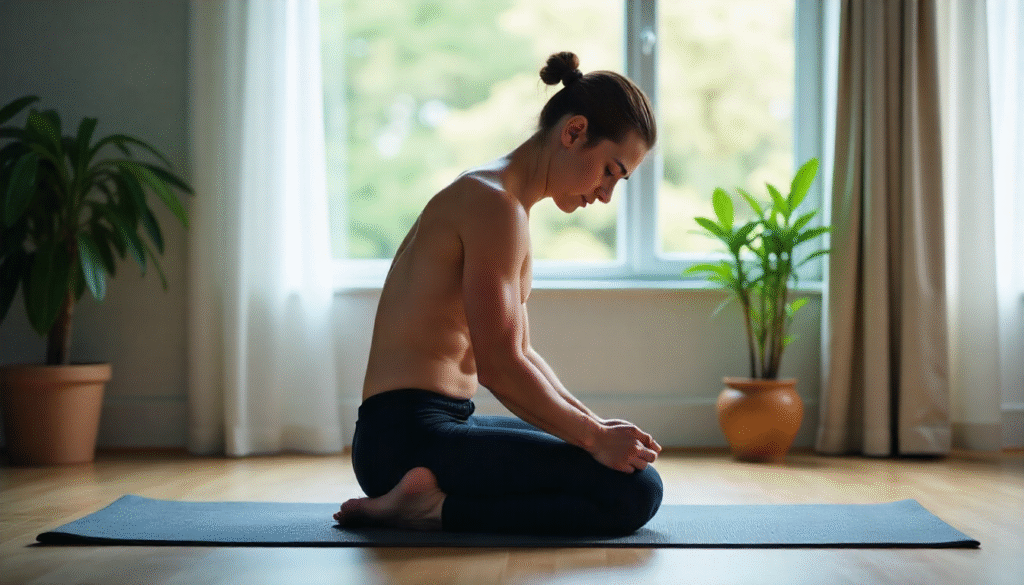
Next, I transition into Child’s Pose, one of the most calming stretches. Kneeling on the floor, I sit back on my heels, extend my arms forward, and rest my forehead on the mat. This relaxes the spine and gently stretches the lower back and hips. Whenever I’m stressed or tired, this position feels like a reset button — both for my body and mind. Holding it for 20–30 seconds helps me reconnect with my breath.
16. Seated Forward Fold
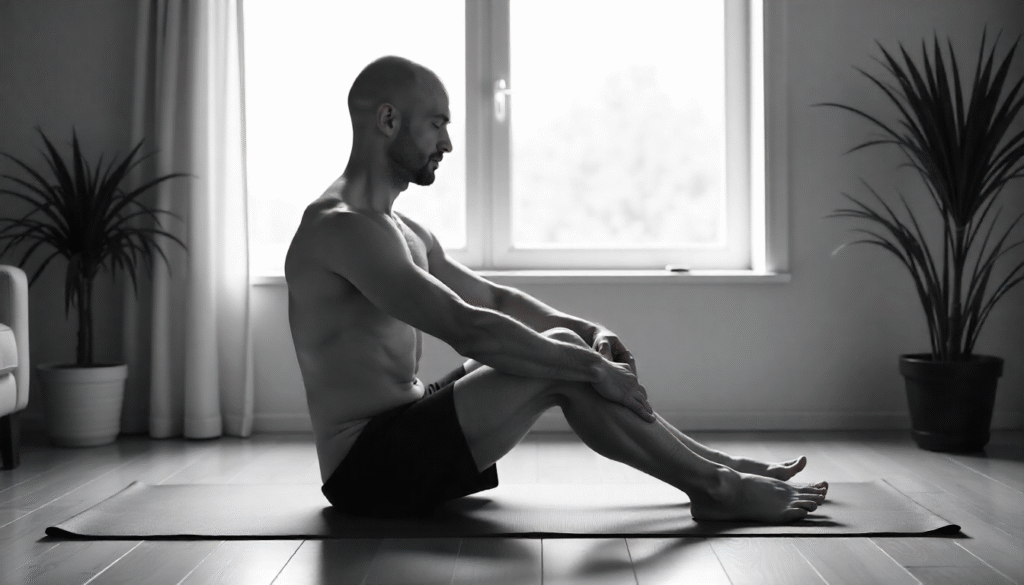
Finally, I end with the Seated Forward Fold. Sitting with legs extended straight, I reach forward toward my toes (or as far as I can comfortably go). The stretch targets the hamstrings, spine, and lower back. At first, I could barely reach past my knees, but with consistency, my flexibility improved. The best part is how relaxed my body feels after holding this stretch for 20 seconds.
My takeaway: “A cool down isn’t just the end of a workout — it’s the bridge between effort and recovery.”
Tips for Beginners
When I started my own Home Abs Workout for Beginners, I made a lot of small mistakes — rushing through reps, ignoring form, and expecting results overnight. Over time, I realized that progress in fitness is about patience, not perfection. If you’re just starting out, here are some tips that completely changed my journey:
1. Start Slow, Focus on Form — Not Speed
In the beginning, I used to race through crunches just to hit a number. But I soon realized my abs weren’t really working — my neck and back were. The secret? Slowing down. When you move with control, you actually engage the muscles properly and prevent injuries. My mantra became: “Quality over quantity, always.”
2. Consistency > Intensity in the Early Stage
I used to think doing 100 crunches once in a while was enough. But honestly, 10 minutes of steady effort every day gave me far better results. Building strength is like building trust with your body — it grows slowly but lasts longer. Don’t worry about intensity at first; just show up daily.
3. Pair Abs Workout with Full-Body Movement
One thing I learned quickly: abs won’t get stronger alone. Pairing core training with bodyweight workouts like squats, push-ups, or even simple exercises at home boosts fat burning and builds lean muscle. A strong core makes those movements easier, and in return, those exercises make your abs more defined. It’s a win-win.
4. Hydration & Nutrition Matter
No workout can outshine poor hydration or nutrition. I noticed when I didn’t drink enough water, my muscles cramped faster and recovery took longer. Eating balanced meals with protein, fiber, and healthy carbs kept my energy levels stable and made my abs workouts more effective. Fitness isn’t just about what you do on the mat — it’s also about how you fuel your body.
My takeaway: “Small daily habits create the biggest long-term transformations.”
Weekly Routine Suggestion
One of the biggest questions I had as a beginner was: “How often should I train my abs?” At first, I tried doing them every single day, but soon realized my muscles felt sore and I wasn’t giving my body enough time to recover. That’s when I learned the importance of balance — training smart, not just hard.
Here’s a weekly plan that worked wonders for me and can easily be adapted by anyone starting out:
- 3 Days Abs Training – Focus on the circuits we covered. For example, do them on Monday, Wednesday, and Friday. This keeps your core consistently challenged but still gives it time to recover between sessions.
- 2 Days Full-Body Workouts – On alternate days like Tuesday and Thursday, I include bodyweight exercises such as squats, push-ups, or lunges. This not only burns more calories but also makes your abs stronger because the core supports every movement.
- Rest & Recovery Days – I always keep Saturday and Sunday lighter. Sometimes I go for a walk, stretch, or do yoga, but I let my muscles rest. Recovery isn’t laziness — it’s when real growth happens.
The best part is that these routines fit perfectly into Home Workouts for Beginners with No Equipment. You don’t need fancy machines or hours in the gym. With just 20–30 minutes a day, you can build strength, improve posture, and feel more energetic.
💡 What I’ve realized: “A strong core isn’t built in a single session — it’s built through consistency across weeks.”
So, set a simple weekly routine, stick to it, and watch your body respond. The results may come slowly, but they will be worth every rep.
Also Read: Top 10 Home workouts for Fat Burning With No Equipment
FAQs – Home Abs Workout for Beginners
1. Can I really get results from a Home Abs Workout for Beginners without equipment?
Yes, absolutely. I’ve personally seen amazing progress using only bodyweight exercises. No equipment doesn’t mean less effective — it just means you’re relying on your own strength. Moves like planks, crunches, and bicycle crunches can tone your abs and improve stability when done consistently.
2. How many days a week should I train my abs?
As a beginner, I recommend starting with 3 days per week. This gives your muscles enough time to recover between sessions. You can pair abs with 2 days of full-body bodyweight workouts for balanced strength and fat burning.
3. How long does it take to see results?
This depends on consistency, diet, and lifestyle. From my experience, most beginners start feeling stronger within 2–3 weeks of regular training. Visible toning usually shows after 6–8 weeks when combined with proper nutrition and hydration.
4. Do abs workouts burn belly fat directly?
This is a common misconception. Abs workouts strengthen and define your core, but fat loss happens through overall calorie burn. That’s why combining your core routine with simple exercises at home like squats, push-ups, or jumping jacks gives the best results.
5. What if I feel back pain while doing abs exercises?
I’ve been there too. If you feel strain in your lower back, it usually means the form is off or your core isn’t engaged properly. Always press your lower back into the mat during crunches and reverse crunches. Start slow, focus on technique, and never force reps if something feels painful.

Hi, I’m Nick, the creator of Fit Glow Hub. My journey with Home Workouts for Beginners with No Equipment started when I wanted to get fit without joining a gym. Over time, I learned how simple bodyweight exercises—like squats, push-ups, and planks—can transform both body and mind.
Here on my blog, I share practical routines, fitness tips, and motivation to help beginners stay consistent and see real results. My goal is to make fitness simple, accessible, and enjoyable for everyone—no expensive equipment required.
